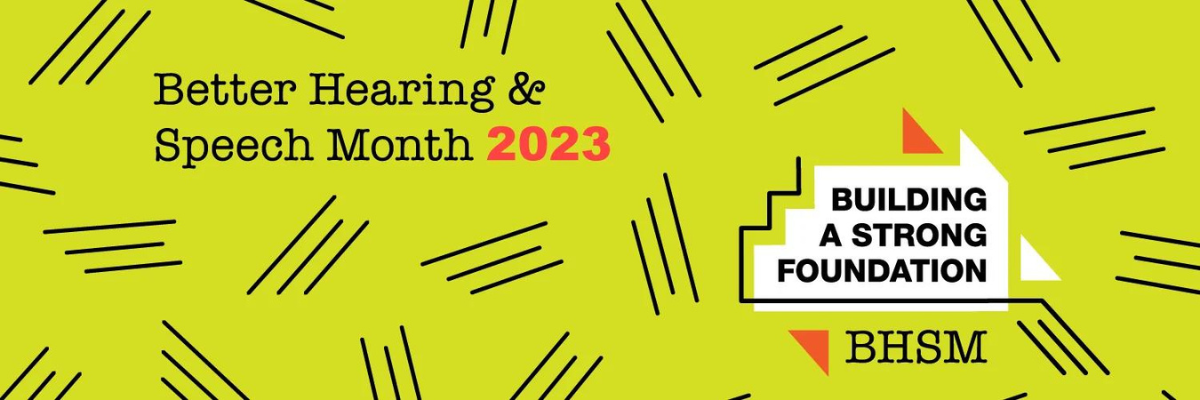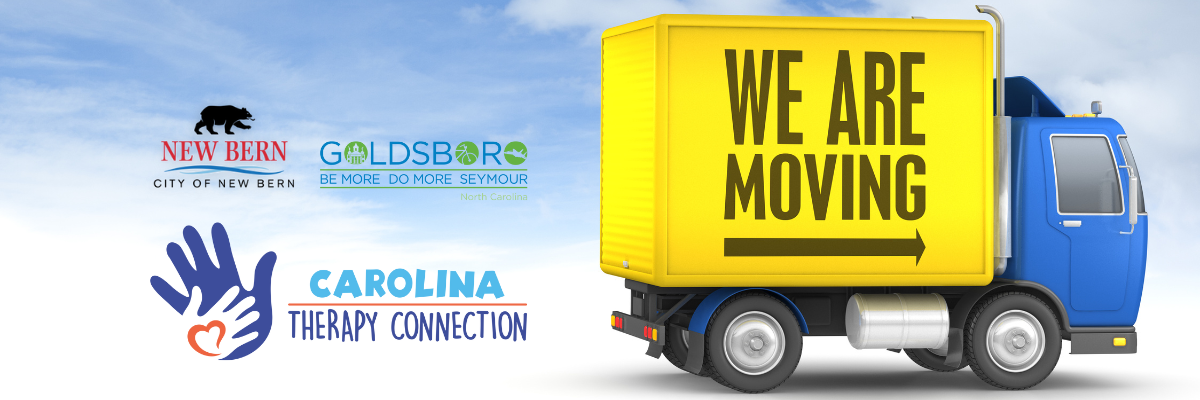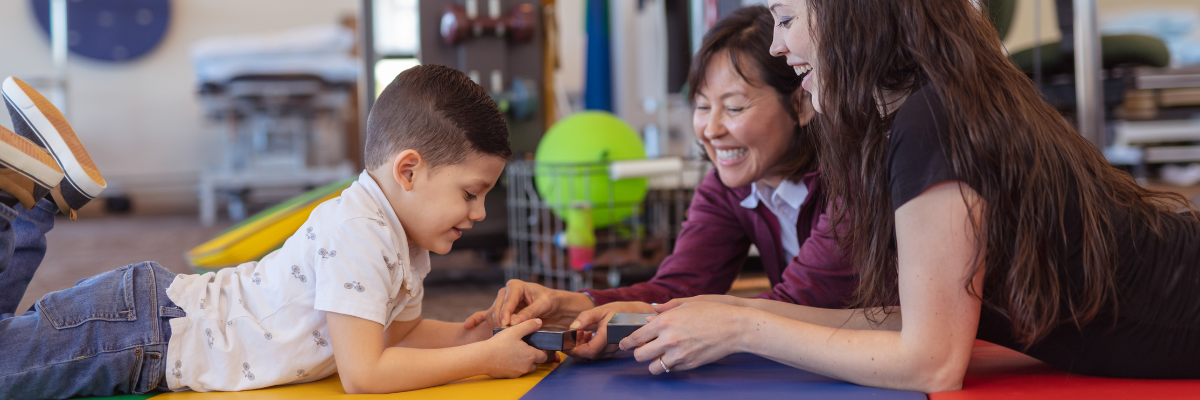Happy Better Hearing and Speech Month!
Better Hearing and Speech Month (BHSM) was founded in 1927, by the American Speech-Language-Hearing Association (ASHA). The aim of Better Speech and Hearing Month is to raise awareness around both speech and hearing problems while encouraging people to take a look at their own speech and hearing and to make a change if there is a problem. Developing strong communication skills is one of the most important elements to socializing and creating relationships. Communicating can be difficult for children with speech and/or language disorders, causing frustration and isolation. A Speech-Language Pathologist helps children overcome communication obstacles, and this month we are giving a huge shout out to our amazing speech therapists at Carolina Therapy Connection! We also want to highlight all the areas that our speech therapists specialize in and treat on a daily basis in our clinics.
What is Speech Therapy?
Speech therapy is the assessment and treatment of communication problems and speech disorders. Your child may need speech therapy if they have difficulty with speech/articulation (pronouncing sounds or words) or using words to communicate. Because the muscles and structures used for speech (such as lips, tongue, teeth, palate and throat) are also used in eating, a speech and language pathologist may also help with feeding and swallowing difficulties, also known as dysphagia.
Our team of pediatric speech therapists provide screening, assessment, consultation, and treatment in the following areas:
- Early Intervention Services
- Feeding and Oral Motor Development
- Articulation/Phonological Disorders and Delays
- Language Disorders and Delays
- Motor-Based Speech Disorders including Childhood Apraxia of Speech (CAS)
- Fluency Disorders
- Hearing screenings available with Speech/Language Evaluations
- Augmentative and Alternative Communication (AAC) Evaluations
What is a Speech Sound Disorder?
A speech sound disorder is a term to describe difficulty producing or articulating speech sounds, including difficulties with perception, motor production, or phonological representation of sounds. Children develop speech sounds at different rates, though most follow the same general pattern of development. Functional speech sound disorders are common, and can be divided into 2 general categories: articulation and phonology. If a child is slower in producing age-appropriate speech sounds, they may have an articulation or phonological delay. Articulation disorders focus on errors including distortions and substitutions in production of individual speech sounds. Phonological disorders focus on rule-based errors or phonological processes that affect more than one sound.
What are general signs of a Speech Sound Disorder?
According to the American Speech Language and Hearing Association (ASHA), signs of symptoms of a speech sound disorder include:
- Omissions/deletions—certain sounds are omitted or deleted (e.g., “cu” for “cup” and “poon” for “spoon”)
- Substitutions—one or more sounds are substituted, which may result in loss of phonemic contrast (e.g., “thing” for “sing” and “wabbit” for “rabbit”)
- Additions—one or more extra sounds are added or inserted into a word (e.g., “buhlack” for “black”)
- Distortions—sounds are altered or changed (e.g., a lateral “s”)
- Syllable-level errors—weak syllables are deleted (e.g., “tephone” for “telephone”)
Children generally develop articulatory precision of sounds at the following ages:
- 2 years old: P
- 3 years old: B, T, D, K, G, M, N, NG, F, H, Y, W
- 4 years old: V, S, Z, SH, CH, J, L
- 5 years old: TH (voiced “THem”) R
- 6 years old: TH (voiceless “paTH”)
What is Apraxia?
Childhood Apraxia of Speech (CAS) is a motor-speech disorder that impacts a child’s ability to perform the motor movements required to produce speech sounds. Children with CAS have more difficulty planning a specific series of movements of the tongue, lips, jaw and palate that are necessary for intelligible speech. As opposed to a true developmental speech delay when the child is following the “typical” path of childhood speech development, children with CAS may exhibit vowel distortions, inconsistent errors, and inconsistent voicing.
What is a Language Disorder?
A language disorder is a term to describe difficulty understanding the message that is coming from others (receptive language) and difficulty relaying their message or information to others (expressive language). Children learn language all the same way, though they do not always learn at the same time. Children with language disorders can have difficulties understanding and/or using written language, spoken language, or both. Also, language disorders differ from speech sound disorders. A speech sound disorder is characterized by difficulties making sounds, whereas with a language disorder, a child can make the sounds but exhibit difficulty using them to communicate. Learning a second language does not contribute to a language disorder. If your child has a learning disorder, they will exhibit difficulties in both languages.
What are the general signs of a language disorder?
According the the American Speech and Language Association (ASHA), signs and/or symptoms of a Language Disorder are as follows:
- Birth to 3 years: Not smiling or engaging/playing with others
- 4-7 months: Not babbling
- 7-12 months: Producing/making only a few sounds; not using gestures (smiling, waving, blowing kisses, etc.)
- 7 months – 2 years: Difficulty understanding what others are saying
- 12-18 months: Saying only a few words
- 1.5 years – 2 years old: Not putting two words together
- 2 years old: Saying fewer than 50 words
- 2-3 years old: Difficulty playing and talking with other children
Preschool Age
Children may have difficulty understanding what is being said to them. Some signs they may exhibit include:
- Understanding meaning behind gestures, like shrugging or nodding
- Pointing to objects or pictures
- Following directions
- Answering questions
Children may have difficulty talking/communicating. Some signs they may exhibit include:
- Naming objects
- Asking questions
- Using gestures
- Putting words together to form sentences
- Learning songs/rhymes
- Knowing how to start and keep a conversation flowing
What is a Fluency Disorder?
It’s normal to catch yourself using disfluencies while talking to a friend, such as saying “um” or repeating a word a couple of times. However, a fluency disorder is characterized by the excess presence of disfluencies, which significantly interferes with one’s ability to communicate with others. The most common type of fluency disorders is stuttering. Stuttering includes speech behaviors such as sound/word repetition, prolongation of sounds, and difficulty initiating a sound/word. People who stutter may also have physical and emotional/psychological symptoms.
What are the signs of a fluency disorder?
The signs of stuttering include:
- Whole word repetitions (e.g., “My-my-my-my friend is here.”)
- Sound/syllable repetitions (e.g., “That’s my d-d-d-dog.”)
- Prolongation of sounds (e.g., “Ssssssssssssstop it!“)
- Blocking, which is when a person who stutters is trying to initiate a word but no sound comes out
- Body movements (e.g., fist clenching, leg tapping, head nodding)
Stuttering can also result in secondary psychological, emotional, and social symptoms such as social anxiety, decreased self-confidence, and avoidance of social situations.
How do I know my child needs a fluency evaluation?
It’s developmentally normal for children to experience more sound and word repetitions when they are between 2-3 years old, since their language is rapidly expanding and their brains are trying to keep up with all the new information. However, it is important to seek an evaluation from a licensed speech-language pathologist if your child is experiencing frequent disfluencies and presents with one or more of the following factors:
- There is a family history of stuttering
- The child is demonstrating negative social, emotional, or behavioral reactions to stuttering events
- The child is experiencing physical tension (hard blinking, fist clenching, etc.) during a stuttering event
- Stuttering events are impacting the child’s ability to effectively communicate
- Other articulation or language delays are present
At Carolina Therapy Connection, our pediatric speech therapists will demonstrate and provide you and your child with education and strategies that:
- Enhance and/or modify your child’s fluency
- Reduce overall tension that causes stuttering
- Minimize or prevent negative reactions to stuttering
- Help your child advocate for their speech needs
How can Carolina Therapy Connection help?
At Carolina Therapy Connection, our treatment for language, speech sound and fluency disorders are highly individualized to your child’s needs. A standardized assessment will be administered to detect any delays or errors within all realms of speech and language compared to same-age peer norms. Our speech therapists will work with you and your child to develop a plan for enhancing their speech and build confidence across all social environments (home, school, social groups, etc). If you have any concerns or questions regarding your child’s speech or language, call our clinic at (252) 341-9944 for a complimentary speech therapy screening. This screening will determine if your child would benefit from a formal evaluation.



































